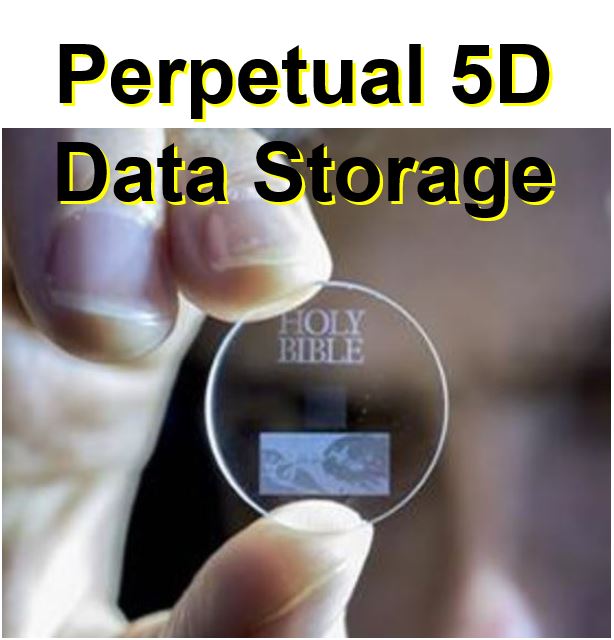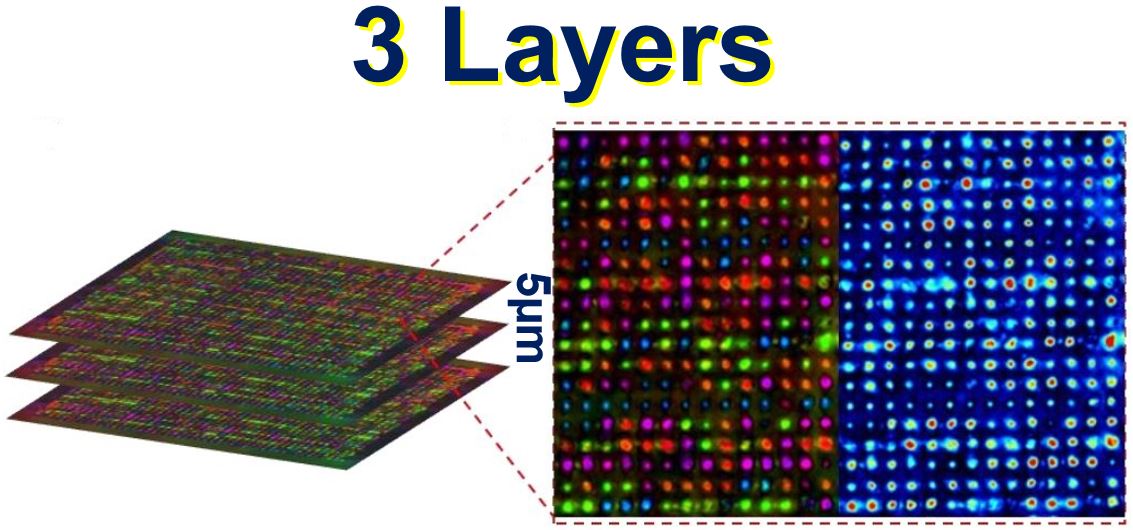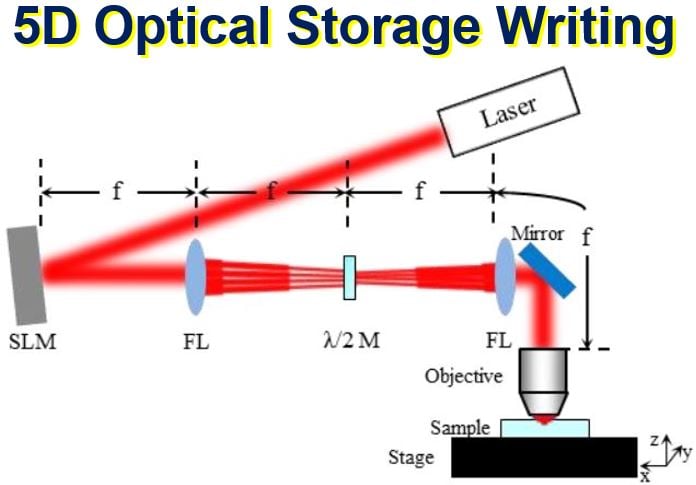Incredible Superman memory crystals can store data for over 13 billion years, in fact, they can store data for longer than the age of our Universe – since the Big Bang occurred – say researchers at the University of Southampton, England.
An amazing 5D digital data storage in nanostructured glass can keep information intact for 13.8 billion years – our Universe is a mere 13.7 billion years old. This super-advanced recording and retrieval process, which uses femtosecond laser writing, has taken this type of technology to a completely new level.
If we stored data in this technology and placed it in a spacecraft that we sent into deep space in the hope that intelligent aliens might know about us one day, the data would still be intact if an extraterrestrial tried to retrieve it billions of years in the future.
 This small memory crystal can store tons of data for longer than the current age of our Universe. (Image: University of Southampton)
This small memory crystal can store tons of data for longer than the current age of our Universe. (Image: University of Southampton)
The team of scientists, from the Optoelectronics Research Centre (ORC) at the University of Southampton, explained that this new storage system allows unprecedented properties including virtually unlimited lifetime capacity at a temperature of up to 160 °C, thermal stability at 1,000 °C, and 360 TB/disc capacity.
A new era of perpetual data archiving
This breakthrough opens a completely new era of everlasting data archiving, say scientists worldwide. All other data storage systems will seem like Stone Age tools in comparison.
As an exceptionally safe and stable form of portable memory, this 5-dimensional data storage could be extremely useful for companies, organisations and governments that need to store large archives, such as national archives, museums and libraries.
Three years ago, the team first demonstrated a prototype of this technology, when a 300 kg digital copy of a text file was successfully stored in 5D.
Since then, Peter G. Kazansky, a Professor at the ORC, and colleagues have come a long way and have managed to store all the data from major documents, including the Universal Declaration of Human Rights (UDHR), Newton’s Opticks, the King James Bible, and the Magna Carta.
 The file is written in three layers of nanostructured dots separated by 5 micrometres. (Image: University of Southampton)
The file is written in three layers of nanostructured dots separated by 5 micrometres. (Image: University of Southampton)
A copy of the Universal Declaration of Human Rights was recently presented to UNESCO by the OTC science team at the International Year of the Light closing ceremony in Mérida, Yucatan, Mexico.
Using nanostructures to store data
The document data was stored using super-fast laser, producing extremely short and intense pulses of light.
The file is written over three layers of nanostructured dots five micrometres apart. There are one million micrometres in one metre. An average strand of human hair is 100 micrometres thick.
The self-assembled nanostructures alter the way light passes through glass, changing the polarization of light that can be read by a combination of an optical microscope and a polarizer, much like what occurs in a pair of Polaroid sunglasses.
The team calls them the Superman memory crystals because – like the memory crystals in the Superman films – the information is stored via self-assembled nanostructures created in fused quartz. Quartz is a hard mineral consisting of silica.
 5D optical storage writing setup: femtosecond laser, spatial light modulator (SLM), Fourier lens (FL), half-wave plates matrix (λ/2 M), dichroic mirror, 1.2 NA water immersion objective, silicaglass sample,translation stage. (Image: University of Southampton, same hyperlink as image above)
5D optical storage writing setup: femtosecond laser, spatial light modulator (SLM), Fourier lens (FL), half-wave plates matrix (λ/2 M), dichroic mirror, 1.2 NA water immersion objective, silicaglass sample,translation stage. (Image: University of Southampton, same hyperlink as image above)
Storing encoded data in 5 dimensions
The encoding of data is done in five dimensions – the three dimensional positions of the nanostructures, plus size and orientation.
Regarding this data storage breakthrough, Prof. Kazansky said:
“It is thrilling to think that we have created the technology to preserve documents and information and store it in space for future generations.”
“This technology can secure the last evidence of our civilisation: all we’ve learnt will not be forgotten.”
The research team presented their study and achievements at the photonic industry’s SPIE – The International Society for Optical Engineering Conference in San Francisco, California, earlier this week on Wednesday, 17th February.
 The data can be stored intact for 13.8 billion years. As far as we are concerned, that means ‘forever’. (Image: University of Southampton)
The data can be stored intact for 13.8 billion years. As far as we are concerned, that means ‘forever’. (Image: University of Southampton)
The authors wrote the following in an Abstract of their presentation:
“The storage allows unprecedented parameters including hundreds of terabytes per disc data capacity and thermal stability up to 1000°C. Even at elevated temperatures of 160°C, the extrapolated decay time of nanogratings is comparable with the age of the Universe – 13.8 billion years.”
“The demonstrated recording of the digital documents, which will survive the human race, including the eternal copies of Kings James Bible and Magna Carta, is a vital step towards an eternal archive.”
Prof. Kazansky and colleagues say they are currently seeking industry partners that might be interested in developing this new technology further and launching it onto the market.
Reference: “Eternal 5D data storage by ultrafast laser writing in glass,” Author(s): Jingyu Zhang, Univ. of Southampton (United Kingdom); Aušra Cerkauskaite, Rokas Drevinskas, Aabid Patel, University of Southampton (United Kingdom); Martynas Beresna, Peter G. Kazansky, Univ. of Southampton (United Kingdom). SPIE – The International Society for Optical Engineering Conference. 17 February, 2016.
Video – Fabrication process for 5D optical storage
This short video shows the fabrication process in action.

